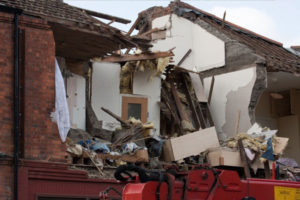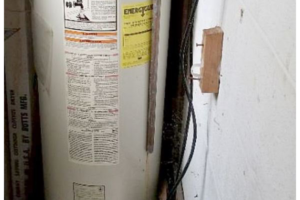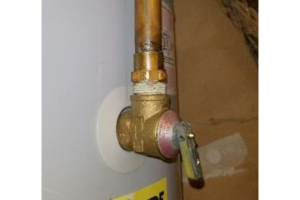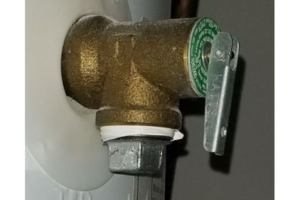Barring some strange fetish, you probably have not fallen in love with your TPRV. That’s OK, we know it’s hard to develop affection for an inanimate object.
It’s just that TPRVs are the unsung heroes of the plumbing world. When a TPRV does its thing, it’s quietly competent. When a TPRV isn’t operative, you need to be really, really concerned.

What Exactly is a TPRV?
TPRV = Temperature Pressure Relief Valve. TPRVs are designed to release water from water heaters in case of excess temperature or pressure . Most water heaters are set to heat water to 210F; water pressure in most homes is between 50 to 60 PSI (pounds per square inch).
Why is a TPRV Important?
TPRVs release hot water if the temperature exceeds 210F and/or pressure exceeds 150 PSI. TPRVs prevent your water heater from exploding. Imagine a 150 lb. hard-metal rocket ricocheting around the inside of your house.
What’s a TPRV Look Like?
TPRVs are valves installed on the side or top of your water heater. TPRVs generally are easy to find because the valves have operating levers (check behind the valve for stamped ratings for pressure and temperature).
And What’s That Pipe Connected to the TPRV?
That pipe is an extension designed to discharge hot water when temps or pressure build. Pipe extensions should be terminated within 6″ of the floor. If they’re too high, water will splash; if they’re too close to the ground, water will splash. If the water heater is located in an area where the floor could be damaged (e.g., attic), the pipe extension should be routed to the exterior of the house, discharging within 6″ of the ground.
Only certain materials can be used as pipe extensions. Copper, iron, and galvanized steel pipes work well and CPVC is OK. Don’t use standard PVC, which could buckle or melt. Pipes also should be smooth-walled; corrugated or flexible pipes can be create turbulence within the pipe, which prevents pressure dispersion and increases the possibility of pipe rupture. Flexible pipes can spray about the room during a discharge, causing a scalding hazard.
How Do I Know Your TPRV is Working?
Test your TPRV regularly to ensure proper operation if you have a new water heater or know that it’s been tested regularly.

Testing an older TRPV that’s never been checked can cause it to leak; when in doubt, hire a plumber to perform the test. Testing is easy – just open the valve for five seconds. Be cautious because hot water will be discharged.
Three Bad TPRV Things
MOST COMMON issue identified by our inspectors.

The water heater’s Temperature Pressure Relief Valve (TPRV) discharge pipe is too short.
The pipe must be no more than 6″ from the floor to prevent a scalding injury should the valve open.
ANOTHER COMMON ISSUE issue identified by our inspectors.
The water heater’s Temperature Pressure Relief Valve (TPRV) extension pipe is routed upwards.
This is a safety hazard that can prevent the valve from opening when required.

WORST POSSIBLE ISSUE identified by our inspectors (thankfully, rare).
The water heater’s Temperature Pressure Relief Valve (TPRV) is capped or has a valve that can effectively prevent a discharge.
Capped valve = no valve. This completely defeats the purpose of a TPRV.
This is a safety hazard that can damage the appliance or cause it to explode.
